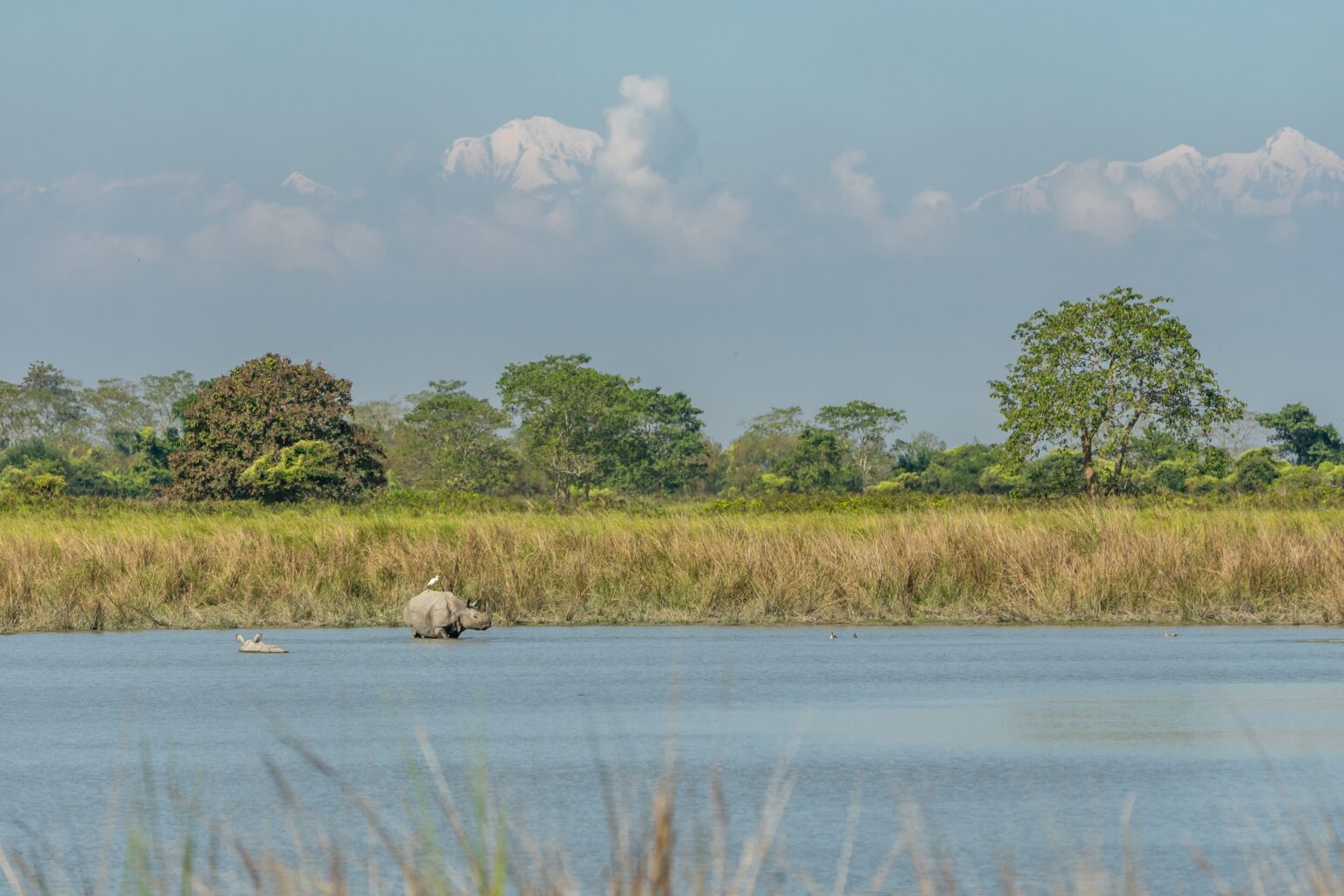Kaziranga National Park, located in the Indian state of Assam, is a wildlife enthusiast’s paradise. Home to a diverse range of flora and fauna, this UNESCO World Heritage site is a must-visit for nature lovers and adventure seekers. Spanning over 430 square kilometers, Kaziranga National Park offers a unique opportunity to discover and explore the rich wildlife that thrives in this magnificent sanctuary.
Wildlife Of Kaziranga National Park
One of the major highlights of Kaziranga National Park is its population of the endangered one-horned rhinoceros. With over 2,400 individuals, Kaziranga has the highest density of one-horned rhinos in the world. These magnificent creatures can be spotted grazing in the grasslands or bathing in the numerous water bodies spread across the park. The park’s successful conservation efforts have played a significant role in saving these magnificent animals from the brink of extinction.
Apart from the one-horned rhinos, Kaziranga is also home to other iconic animals such as tigers, elephants, wild buffaloes, and swamp deer. The park boasts an impressive population of tigers, making it an ideal destination for tiger enthusiasts. The lush green landscape provides the perfect camouflage for these elusive cats, making tiger sightings an exhilarating experience.
Another fascinating species that can be found in Kaziranga National Park is the Asian elephant. Known for their majestic presence and gentle demeanor, these elephants often roam in herds and can be observed from the safety of a jeep or on elephant-back safaris. The park also has a significant population of wild buffaloes, known as the water buffalo, which can be spotted near the park’s wetlands and water bodies.
More:Read Another Post Unique Wildlife of the Sundarbans in West Bengal
One of the unique features of Kaziranga is its vast network of wetlands. These wetlands, including vast expanses of swamps and marshes, harbor a rich diversity of birds. With over 480 species of birds, Kaziranga is a paradise for birdwatchers. The park is home to several migratory birds, including the endangered Bengal Florican and the elusive Grey-headed Fish Eagle. Birdwatching in Kaziranga is a delightful experience, with the vibrant colors and melodious songs of birds captivating visitors.
The park’s landscape is a mosaic of grasslands, forests, and water bodies, creating diverse habitats for a wide variety of animals. Kaziranga’s wet grasslands, known as “beels,” provide important feeding and breeding grounds for numerous species. These grasslands are also home to the beautiful swamp deer, locally known as “Barasingha.” These majestic creatures, with their impressive branched antlers, can be seen wandering through the grassy plains.
To explore this rich wildlife, visitors can choose from several activities and safaris. Jeep safaris are a popular option, allowing visitors to venture deep into the park’s core areas and have a closer encounter with the animals. Elephant-back safaris offer a unique and more immersive experience, as these gentle giants carry visitors through the dense vegetation, allowing for a closer view of the wildlife.
In addition to the wildlife, Kaziranga National Park is also of great ecological importance. The park is located in the floodplains of the Brahmaputra River, and the annual flooding plays a crucial role in maintaining the park’s ecosystem. These floodwaters enrich the soil and create a favorable breeding ground for many species. Kaziranga is also home to several rare and endangered plant species, adding to its ecological significance.
To ensure the long-term conservation of the park, Kaziranga National Park has implemented various conservation initiatives. These include anti-poaching patrols, habitat restoration, and community-based conservation programs. The park works closely with local communities to raise awareness about the importance of conserving wildlife and the sustainable use of resources.
More: Wanted to download Odisha Magazines, visit here
Visiting Kaziranga National Park is not only about witnessing the stunning wildlife but also about contributing to its conservation. The revenue generated from tourism plays a vital role in supporting the park’s conservation efforts. Visitors can learn about the challenges faced by the park and actively participate in conservation activities, such as tree plantation drives and educational programs.
In conclusion, Kaziranga National Park in Assam offers a unique and unforgettable wildlife experience. With its diverse range of flora and fauna, including the iconic one-horned rhino, tigers, elephants, and a myriad of bird species, the park is a haven for nature lovers and wildlife enthusiasts. Immerse yourself in the breathtaking beauty of Kaziranga and discover the wonders of its wildlife, while contributing to the conservation of this precious ecosystem.
What is Kaziranga National Park?
Kaziranga National Park is a famous wildlife reserve located in the Indian state of Assam. It is known for its diverse flora and fauna, including the endangered one-horned rhinoceros
How big is Kaziranga National Park?
Kaziranga National Park spans an area of approximately 430 square kilometers (166 square miles).
What is the best time to visit Kaziranga National Park?
The park is open for visitors from November to early April. The best time to visit is during the winter season (November to February) when the weather is pleasant, and wildlife sightings are more frequent.
What wildlife can be seen in Kaziranga National Park?
Kaziranga is renowned for its population of one-horned rhinoceros, but it is also home to many other species. Some prominent wildlife includes elephants, tigers, wild water buffalo, swamp deer, hog deer, and various species of birds.
Is there a visitor center or museum in Kaziranga National Park?
Yes, there is a visitor center located near the Kohora range, where visitors can gather information about the park, its wildlife, and conservation efforts. There is also a small museum showcasing artifacts and facts about the flora and fauna of the region.

